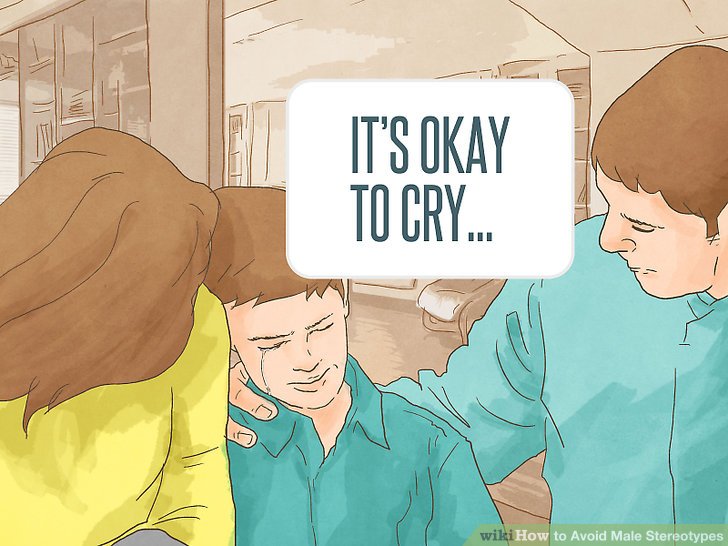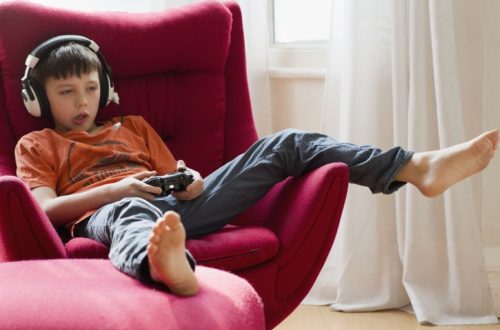Among my many male clients are husbands dragged into therapy by spouses who want them to “open up.” As I chip away at them, I discover complex relationships with feelings, and a lack of security expressing them because they don’t know how. They sit in a rigid pose, speak in short, concrete sentences, and use humor when serious issues are broached. In both sides of my family, men avoid feelings, and are not keen on vulnerability. It has taken me a lifetime to feel safe in my feelings, but professional life and desire for intimacy dictated I dig deeper inside myself and embrace vulnerability in order to allow for intimate personal and professional relationships. Now, when I sit opposite a rigid male, mine is the softer voice; I am more likely to have moisturized that day, and I will be the one who sniffles during The Good Doctor.
Although men crave intimacy, our allergic reactions to it necessitates therapy goals tailored towards increased access to feelings vital to closeness. It’s a challenge created by indoctrination into masculine gender roles and gender expression that begins the moment nurseries are decorated in traditional masculine themes, and newborn boys are assigned the color blue. Helping men escape gender stereotypes is similar to cult deprogramming in that the brain needs rewiring to accept new ideas, and men must learn to forget what we’ve learned about masculinity, and think for ourselves.
Even today I am reminded when I break unwritten laws of masculinity. My wife often tells me I sit “like a girl”, and believes having a penis means I should be handier with tools. In a sense, women simultaneously expect men to break away from certain stereotypes, but their expectations perpetuate others. If my own wife struggles to accept my femininity, I can only imagine what my alpha clients thinks of their therapist whose room is scented with lavender, and who sometimes conducts sessions sans shoes.
Gender conditioning is generational, meaning no single person bears blame, and every generation has the opportunity to understand its effects, and create change. Dads are key to eradicating gender norms, but if we are going to steer our sons clear of stereotypes, we need to embrace our own softer side.
I never tell my son to “act like a man” or “man up.” When I hear those phrases, aggression and dominance come to mind, and makes me wonder if Harvey Weinstein and Bill Cosby were simply acting like what they thought men are supposed to be. There is strong possibility if boys are taught a full range of emotional expression, are encouraged to express vulnerability, and are not infused with beliefs about male dominance, physical aggression against women will be reduced.
Male stereotypes are woven so deeply into our fabric they pervade most aspects of life, and create unnecessary fear and anxiety when challenged. Years ago I had a friend who refused to accompany me into a Starbucks because he believed two men in a cafe was “gay.” On several occasions we had coffee in diners, but a trendy cafe in the late 90s implied something different. I’ve also worked with children whose dads expect them to learn to fix cars or play spots because it’s what boys do.
Gender stereotypes also influence self-care, a fact of which I am reminded by raised eyebrows when I declare my affinity for pedicures. It’s ludicrous to believe women could have their feet pampered while men sit on their toilet, legs in a figure-four, and listen to errant clippings smack the walls. Women take mud baths, get facials, and have intimate conversations with friends while men scream at sports, try to hit a tiny ball into a tiny hole three-hundred yards yonder, brag about sexual conquests. When a man drops his guard and lets slip he had a massage, he is quick to reassert his masculinity by bragging about the “happy ending.”
The most serious consequence of gender conditioning is that men learn to swallow fear and sadness, and regurgitate them as anger. I encounter this in couples therapy whenever emotion runs high. Both partners express feelings, but while women express fear and sadness, men call on anger to bully those feelings and distance themselves from the one person from whom they desire closeness, but around whom they fear revealing their vulnerability.
If gender stereotypes are to be broken, home and school need to work together to create a safe space for a full range of expression. There are studies that indicate toys strongly associated with masculinity promote violence and aggression, yet these choices are the preferences of dads who fear a negative consequence should their sons play with a doll house. Simply because a boy chooses dolls one day doesn’t mean he won’t pick up a football the next. He might even find himself tossing it to a girl who aspires to play football. The subject of toys reminds me of when I played with Batman or G.I. Joe dolls. At some point “dolls” was deemed too feminine, and those toys were soon marketed as “action figures.”
One positive is the implementation of preschool curricula that discourage reinforcement of stereotypical gender expression and gender roles. At 3 or 4 years of age, pre-kindergarten students are being given a strong foundation on which acceptance can be built. While engaged in imaginative play, boys are encouraged to explore the “kitchen area” while girls are encouraged to build with blocks, or play with construction toys. However, if these school lessons are not reinforced at home, the message will be lost.
Boys benefit when free to formulate a self independent of gender expectations. When freedom of choice is granted, boys explore feelings conducive to empathy and compassion, and learn to accept feelings typically tied to shame. Once acceptance is achieved, the gap between who boys are, and who they are expected to be narrows, and grants less space in which anxiety depression, and aggression live.




